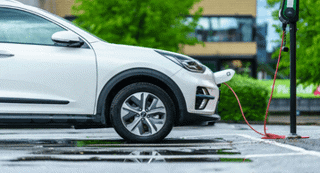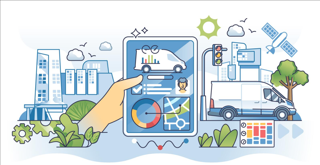By Aidan Rowsome, general manager, GreenRoad Europe
In my travels to fleet depots around the UK, I have observed that the number of fleet managers without web access is shrinking just as the use of proprietary handheld mobile devices is also falling.
Smartphones and tablets are allowing managers to operate their fleet while out of the office as drivers themselves become more tech-savvy.
My sense is that changing attitudes to technology and new innovations are rendering traditional telematics systems obsolete.
Indeed, the advent of smartphones, cloud computing or software as a service (SaaS) and industry standard application programming interfaces (APIs) is heralding the arrival of the connected fleet.
What are these latest technologies?
Anyone who already plays Facebook games on their 3G smartphone is already using open APIs in a cloud environment.
The game – which is hosted in the cloud rather than on your device – uses interfaces to your Facebook data to personalise the experience to you.
Similarly, a connected fleet service can instantly share data and insight about vehicles, driver behaviour, risk and fuel economy with third-party applications as well as drivers, depot managers, risk managers and insurance partners.
The data is stored in the cloud and is available to all parties through a personalised, secure web portal.
And can be accessed on phones and tablets too.
And as we move from a proprietary, closed world to open platforms where standard APIs are the norm, customers can cut the time required to integrate data with their existing systems.
For example, a supply chain solution can use live vehicle GPS data to streamline their operations.
Even just a year ago, I would have discussed cloud computing with fleet executives and expected a nervous reaction as they considered the security implications of sharing data.
But this is no longer an issue now the technology is proven even in a risk-adverse industry such as banking.
The connected fleet has arrived and web-based fleet management services are well on their way to displacing traditional telematic solutions.


















Login to comment
Comments
No comments have been made yet.